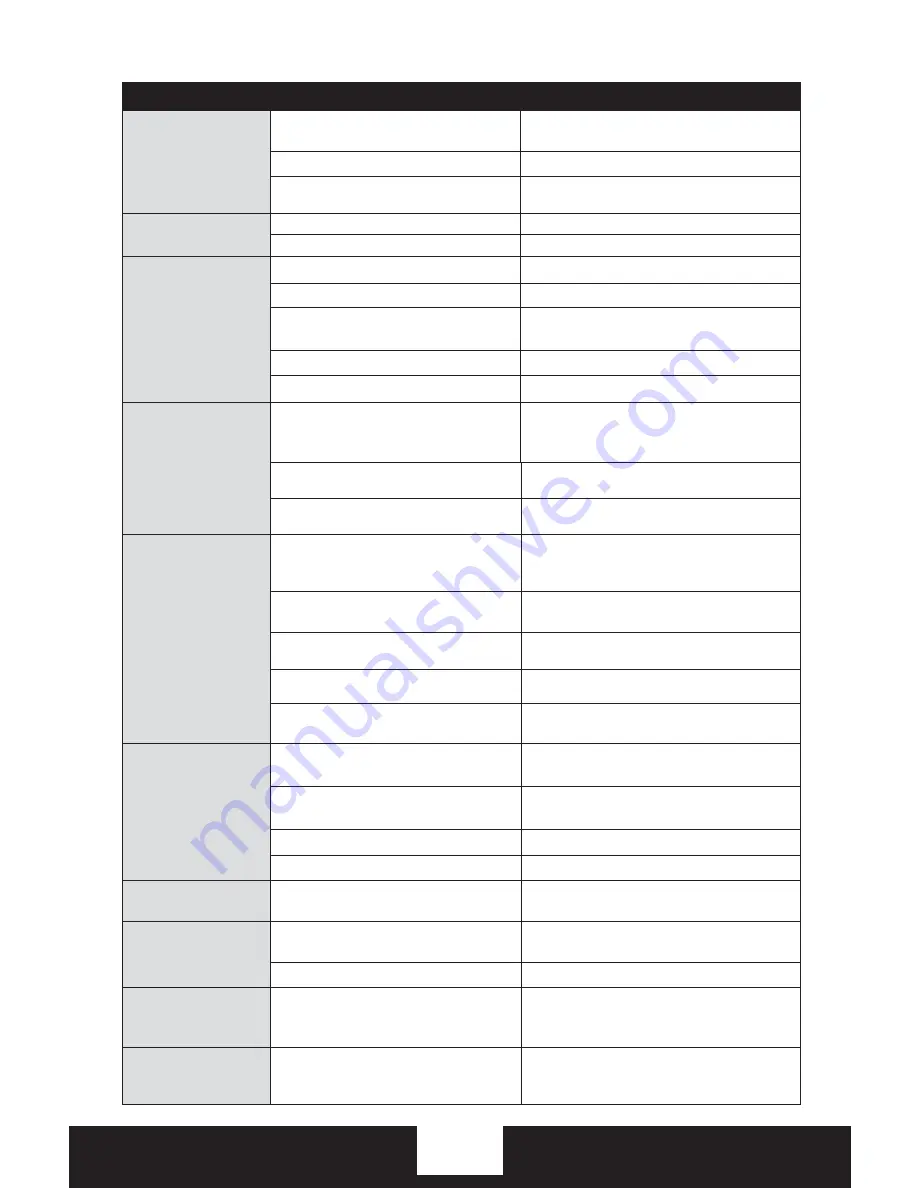
13
Troubleshooting Guide
EN
Problem
Possible Cause
Solution
Aircraft will not respond
to throttle but responds to
other controls
Throttle stick and/or throttle trim too high
Reset controls with throttle stick and throttle trim at
lowest setting
Throttle channel is reversed
Reverse throttle channel on transmitter
Motor unplugged from receiver
Open fuselage and ensure the plug for the motor is
properly installed
Extra propeller noise or
extra vibration
Damaged propeller, spinner, prop shaft or motor Replace damaged parts
Nut on prop shaft is too loose
Tighten the prop shaft nut 1/2 turn
Reduced fl ight time or
aircraft underpowered
Flight battery charge is low
Completely recharge fl ight battery
Propeller installed backwards
Install propeller with numbers facing forward
Flight battery damaged
Replace fl ight battery and follow fl ight battery
instructions
Flight conditions may be too cold
Make sure battery is warm before use
Battery capacity too low for fl ight conditions
Replace battery or use a larger capacity battery
LED on receiver fl ashes and
aircraft will not bind to
transmitter (during binding)
Transmitter too near aircraft during binding
process
Power off transmitter, move transmitter a larger
distance from aircraft, disconnect and reconnect fl ight
battery to aircraft and follow binding instructions
Bind switch or button not held while transmitter
was powered on
Power off transmitter and repeat bind process
Aircraft or transmitter is too close to large metal
object, wireless source or another transmitter
Move aircraft and transmitter to another location and
attempt binding again
LED on receiver fl ashes
rapidly and aircraft will
not respond to transmitter
(after binding)
Less than a 5-second wait between fi rst
powering on transmitter and connecting fl ight
battery to aircraft
Leaving transmitter on, disconnect and reconnect fl ight
battery to aircraft
Aircraft bound to diff erent model memory
(
ModelMatch
TM
radios only)
Select correct model memory on transmitter and
disconnect and reconnect fl ight battery to aircraft
Flight battery/transmitter battery charge is too
low
Replace/recharge batteries
Transmitter may have been bound to a diff erent
model (or with a diff erent DSM Protocol)
Select the right transmitter or bind to the new one
Aircraft or transmitter is too close to large metal
object, wireless source or another transmitter
Move aircraft and transmitter to another location and
attempt linking again
Control surface does
not move
Control surface, control horn, linkage or
servo damage
Replace or repair damaged parts and adjust controls
Wire damaged or connections loose
Do a check of wires and connections; connect or replace
as needed
Flight battery charge is low
Fully recharge fl ight battery
Control linkage does not move freely
Make sure control linkage moves freely
Controls reversed
Transmitter settings reversed
Do the Control Direction Test and adjust controls on
transmitter appropriately
Motor loses power
Damage to motor, propeller shaft or power
components
Do a check of motor, prop shaft and power components
for damage (replace as needed)
Nut on prop shaft is too tight
Loosen prop shaft nut until propeller shaft turns freely
Motor power quickly
decreases and increases
then motor loses power
Battery power is down to the point of receiver/
ESC Low Voltage Cutoff (LVC)
Recharge fl ight battery or replace battery that is no
longer performing
Servo locks or freezes at
full travel
Travel adjust value is set above 100% overdriving
the servo
Set Travel adjust to 100% or less




































